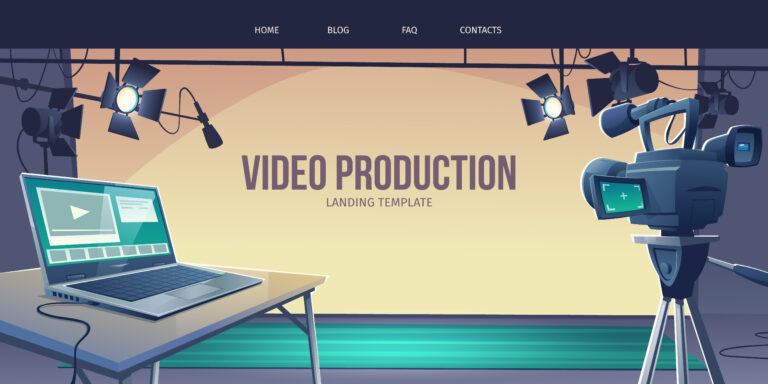In today’s digital age, having an effective and visually appealing website is crucial for businesses and individuals alike. A well-designed website can attract visitors, engage them, and convert them into loyal customers or followers. However, not all websites are created equal, and there are various types of website designs that serve different purposes and target different audiences. In this article, we will explore some of the most common types of website designs and their key features.
Table of Contents
- Introduction
- Static Websites
- Dynamic Websites
- E-commerce Websites
- Responsive Websites
- Single-Page Websites
- Parallax Websites
- Minimalist Websites
- Magazine-Style Websites
- Portfolio Websites
- Blog Websites
- Corporate Websites
- Landing Page Websites
- Mobile-First Websites
- Conclusion
- FAQs
Introduction
A website’s design plays a significant role in determining its functionality, user experience, and overall success. Different types of website designs cater to specific purposes and target diverse audiences. Understanding these designs can help you make informed decisions when creating or revamping your website. Let’s delve into the various types of website designs and explore their unique characteristics.
1. Static Websites
A static website consists of web pages with fixed content that remains the same unless manually updated by a web developer. These websites are relatively simple and suitable for businesses or individuals who require a basic online presence without frequent updates. Static websites are cost-effective, easy to host, and provide fast loading times.
2. Dynamic Websites
Dynamic websites, on the other hand, are built with dynamic web pages that allow content to be generated in real-time. They are database-driven and provide a more interactive and personalized user experience. Dynamic websites are commonly used for content management systems, online forums, social media platforms, and news websites.
3. E-commerce Websites
E-commerce websites are specifically designed for online businesses that sell products or services. These websites often include features such as product catalogs, shopping carts, secure payment gateways, and order tracking systems. E-commerce websites aim to provide a seamless and convenient shopping experience for customers.
4. Responsive Websites
In today’s mobile-dominated world, responsive websites have become essential. A responsive design ensures that the website adapts and displays optimally across different devices and screen sizes, including desktops, laptops, tablets, and smartphones. By providing a consistent user experience, responsive websites improve usability and accessibility.
5. Single-Page Websites
Single-page websites are concise and present all the necessary information on a single scrollable page. They are ideal for projects or businesses that require a minimalist approach and have limited content to showcase. Single-page websites are visually appealing, easy to navigate, and can create a captivating storytelling experience.
6. Parallax Websites
Parallax websites utilize the parallax scrolling effect to create a visually engaging and interactive experience for users. The background and foreground of the web page move at different speeds, giving a sense of depth and immersion. Parallax websites are commonly used for storytelling, portfolios, and creative projects.
7. Minimalist Websites
Minimalist websites focus on simplicity, clarity, and whitespace. They embrace the “less is more” philosophy, using clean layouts, limited color palettes, and concise content. Minimalist websites convey elegance and sophistication while ensuring that the core message or purpose remains the focal point.
8. Magazine-Style Websites
Magazine-style websites mimic the layout and design of traditional print magazines. They often feature multiple content sections, grid-based layouts, visually rich imagery, and engaging typography. Magazine-style websites are commonly used for online publications, blogs, and news portals.
9. Portfolio Websites
Portfolio websites showcase the work, projects, or creative endeavors of individuals or agencies. They prioritize visual aesthetics, allowing artists, designers, photographers, and other professionals to display their skills and expertise. Portfolio websites often include galleries, sliders, and interactive elements to captivate visitors.
10. Blog Websites
Blog websites focus on regularly publishing articles, stories, opinions, or insights on specific topics. They offer a platform for individuals, businesses, or organizations to share their expertise, connect with their audience, and build a community. Blog websites typically have a chronological layout with categories, tags, and commenting systems.
11. Corporate Websites
Corporate websites serve as the digital face of a company or organization. They represent the brand identity, provide information about products or services, and establish credibility and trust. Corporate websites often feature professional designs, corporate colors, clear navigation, and comprehensive content about the company and its offerings.
12. Landing Page Websites
Landing page websites are specifically designed to capture the attention of visitors and encourage them to take a specific action, such as signing up for a newsletter, making a purchase, or requesting more information. These websites have a focused design, compelling call-to-action buttons, and minimal distractions to maximize conversions.
13. Mobile-First Websites
With the rise of mobile browsing, mobile-first websites prioritize the mobile user experience and design their layouts and functionalities accordingly. These websites are built with a mobile-first approach, ensuring that they are fully optimized for smaller screens and touch interactions. Mobile-first design improves loading speed, responsiveness, and overall user satisfaction.
14. Conclusion
In conclusion, there are various types of website designs, each tailored to fulfill specific purposes and cater to different audiences. Whether you require a static website for a simple online presence or an e-commerce website to sell products, selecting the right design is crucial for success. Consider your goals, target audience, and desired user experience to determine the most suitable website design for your needs.
FAQs
- Q: How do I choose the right website design for my business? A: To choose the right website design, consider your business goals, target audience, content requirements, and desired user experience. Consulting with a web designer or agency can also provide valuable insights.
- Q: Can I combine different website designs? A: Yes, it’s possible to combine different website designs based on your requirements. A web designer can help you create a unique and customized design that incorporates elements from multiple styles.
- Q: Are responsive websites necessary? A: Yes, responsive websites are crucial in today’s mobile-centric world. With a large number of users accessing the internet through mobile devices, a responsive design ensures optimal user experience and accessibility.
- Q: How often should I update my website’s content? A: Regularly updating your website’s content is essential to keep it fresh, engaging, and relevant. The frequency of updates depends on your industry, content strategy, and the type of information you want to provide.
- Q: What factors should I consider when designing an e-commerce website? A: When designing an e-commerce website, consider factors such as user-friendly navigation, intuitive product search, secure payment gateways, mobile optimization, customer reviews, and effective product presentation.
In this article, we have explored different types of website designs, from static and dynamic websites to e-commerce and minimalist designs. Each design has its unique features and advantages, and choosing the right one depends on your specific needs and goals. Remember to focus on user experience, responsiveness, and captivating visuals to create an effective website that engages and converts your audience.
Don’t forget to check out these essential WordPress blogs too:
- Make Your WordPress Website Shine with Elementor
- 7 Reasons to Start a WordPress Blog
- The Benefits of WordPress for Small Businesses
- 10 Reasons Why WordPress is the Best Option for Small and Mid-Size Businesses
- Setting up a WordPress Website
With comprehensive WordPress plugins, a superb website design and smart digital marketing practices, you can surpass your competitors and achieve great success in your business.




